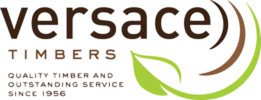There’s nothing quite like hardwood floors. The way that it looks and the way that it feels under your feet is difficult to beat. But there is another option when it comes to quality wood flooring – Engineered Timber Flooring. Read on to learn more about this kind of wood flooring, and its advantages and disadvantages.
Engineered Timber Flooring Pros and Cons
If you aren’t familiar with engineered timber which is often used in flooring, here’s a quick description of what it is. Engineered wood flooring is similar to solid hardwood flooring, except the engineered wood is made with a layer of hardwood laminated veneer timber on the top of a layer of plywood. The plywood used is a cross laminated timber, which gives it extra strength and robustness. This means engineered wood has many of the same characteristics as solid hardwood flooring, but without some of the drawbacks. For this article we’re going to lay out engineered timber flooring pros and cons, which we hope will be helpful for you if you are considering this as flooring for your home or business.
The Advantages of Engineered Timber Flooring
Moisture Resistance
Due to the way that Engineered Timber boards are put together, they are more moisture resistant. This is due to the cross laminated timber that the plywood base of engineered wood flooring is made from. The adhesives used to make the plywood and to hold the hardwood veneer to the plywood is more resistant to moisture than the porous cellular structure of regular wood. This is especially important if you live near the coast. Moisture can cause bowing or cupping in some hardwoods, which is less of an issue with engineered wood flooring.
Wider Boards
We are finding that more and more people are preferring to use wider boards for their home’s flooring as an aesthetic decision. But this is not always easy to do with a solid hardwood floor because it’s difficult to cut a lot of wide boards from round trees. A few wider boards can be cut from the centre of a tree trunk, but as you get closer to the outside of the tree the boards being cut have to be narrower. Because engineered wood flooring uses a thin laminated veneer timber, more thick boards can be made from a smaller number of hardwood trees.
Sustainability
This is related to more boards being made from fewer hardwood trees. Hardwood is beautiful, but it is also very popular. It is important that we responsibly use natural resources like these. Being able to make most of the flooring from plywood and covering the plywood with only a small amount of beautiful hardwood is a sustainable approach to flooring, and engineered wood flooring looks just as good as solid hardwood.
Less Expensive in Many Modern Homes
Traditionally a home’s floor was built on a wooden subfloor, such as structural wood beams. These days many homes are built on solid concrete slab foundations, and many solid hardwoods can’t be installed directly on concrete. There has to be a wooden subfloor between the concrete and the hardwood flooring. This increases the expense and increases the height of the floor. Engineered wood flooring can be installed directly on concrete foundations, which makes it cheaper and less of a use of space.
The Disadvantages of Engineered Wood Flooring
Higher Cost Than Other Flooring Options
While engineered timber flooring is a price efficient flooring option, there are cheaper alternatives, such as linoleum. But you’re not going to get anywhere near the same level of looks from most other kinds of flooring as you will get from beautiful engineered wood flooring. We all know the saying ‘you get what you pay for’, and this is especially true for flooring.
Doesn’t Do Well with Stains and Chemical Spills
This could be said for many kinds of wood flooring, but it is worth mentioning. Engineered wood flooring is wood, and wood absorbs staining substances quite easily, such as chemicals. This means that you have to be extra careful with some engineered wood flooring. But at Versace Timbers, we offer Boral Engineered Flooring, which comes finished with 7 layers of acrylic lacquer, so staining is rarely a problem.
Thinner Wear Layer
A lot of engineered wood flooring uses a very thin layer of hardwood over the plywood. Sometimes this layer can be as thin as a single millimetre. This can lead to less durability compared to other flooring options. But the Boral Engineered Flooring sold at Versace Timbers comes with a 4 millimtre layer of hardwood laminate, which makes it higher quality and tougher wearing than many other engineered wood floors.
What is the Best Kind of Flooring for You?
Now that you are knowledgeable about engineered timber flooring pros and cons, you can make an informed decision about your next flooring purchase. Versace Timbers are timber suppliers and we offer various kinds of structural timber flooring. Let us know if you have any questions about engineered timber flooring or would like to discuss any of our various other timber supplies. You can request a call online, call us on 07 3266 9000, or you can visit the Versace Timbers timber yard in Virginia at 33 Vauxhall St Virginia QLD 4014.

